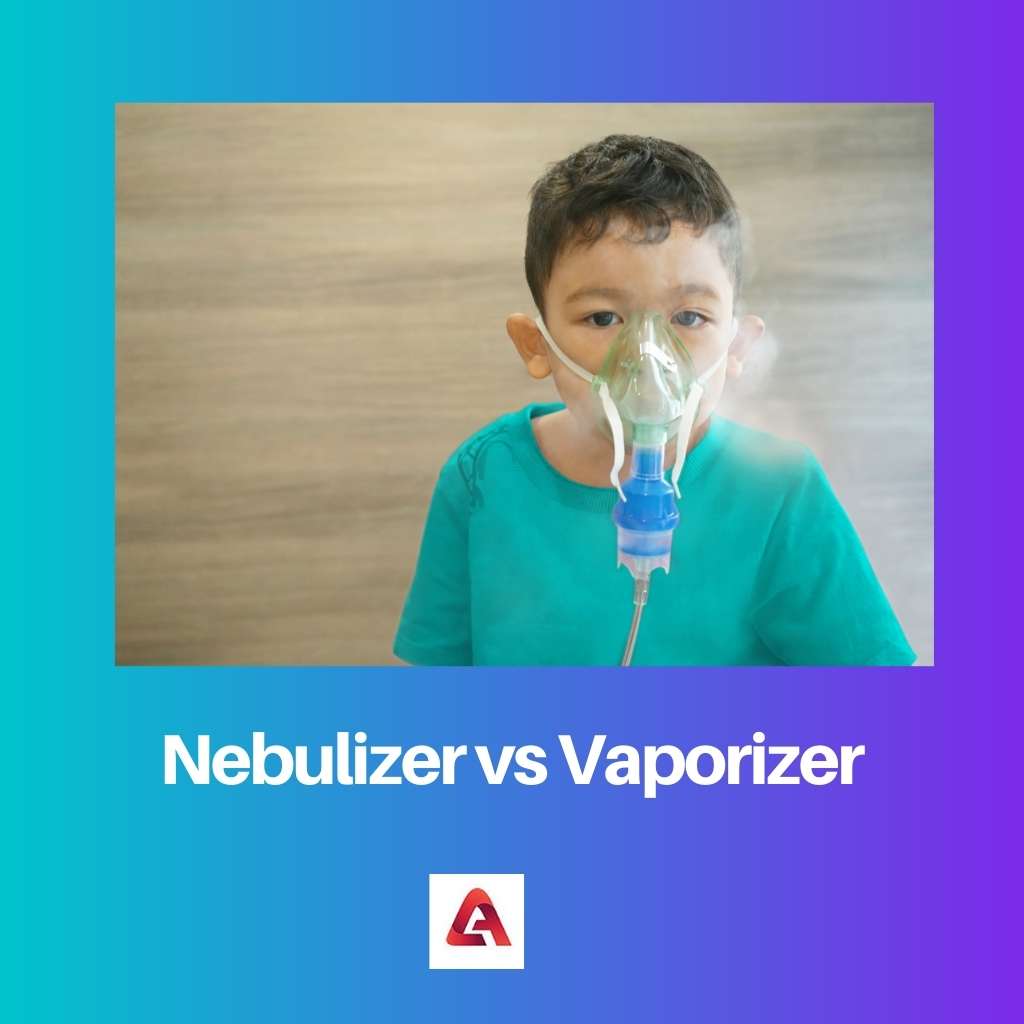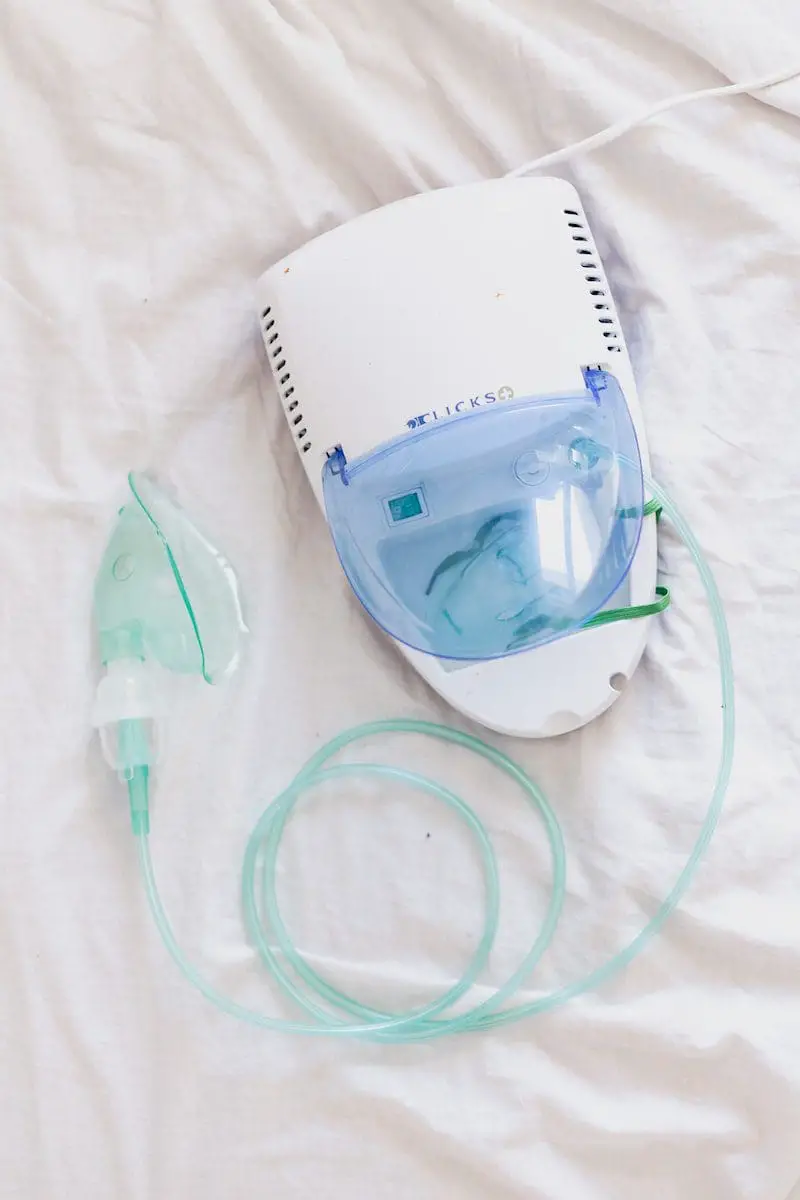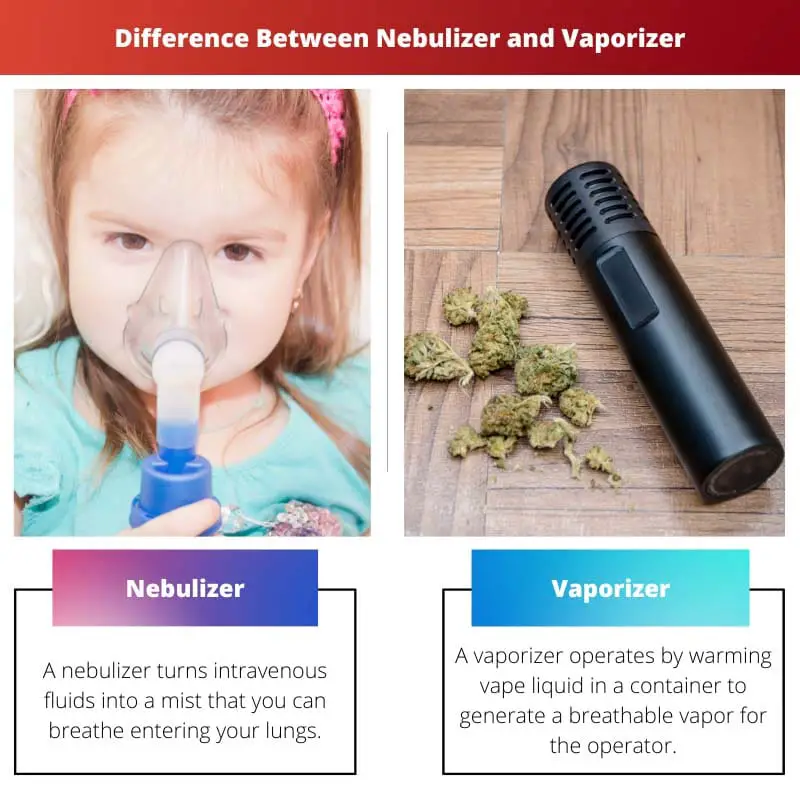In the house, nebulizers and vaporizers have gained commonplace. They’re a godsend for folks who suffer from allergies and other physical issues caused by poor air quality.
Nebulizers are more efficient, allowing for the rapid administration of a fast-acting medicine.
Vaporizers, also termed humidifiers, have been shown to provide several advantages over time. They enhance air performance by emitting hygienic moisture into the atmosphere and assisting in the maintenance of ideal humidity ratios.
Key Takeaways
- Nebulizers convert liquid medication into a fine mist for inhalation, while vaporizers heat water to produce steam for inhalation.
- Nebulizers are primarily used to administer medication for respiratory conditions, whereas vaporizers relieve cold symptoms and congestion.
- Both devices facilitate the delivery of therapeutic substances through inhalation but differ in their applications and mechanisms.
Nebulizer vs Vaporizer
A Nebulizer is a device used to treat respiratory conditions such as asthma, chronic obstructive pulmonary disease (COPD), and cystic fibrosis. Vaporizers is a type of device that is used to create a vapor that is inhaled for aromatherapy, relaxation, or recreational purposes.

A nebulizer disperses medication by converting it from a solvent to a fine spray, making it easier to inhale into the respiratory. They are normally available in two volumes: table top and compact.
The size of the nanoparticle ranges from 0.5 microns to 10 microns for sensors. For enhanced issuance, saline is frequently administered to drugs. The use of a nebulizer is sometimes referred to as “breathing therapy.”
Vaporizers generate steam and vaporize pharmaceuticals so that they can be consumed. When the moisture content falls below 30%, it might be dangerous to one’s health.
Vaporizers provide mist and contribute wetness to the air to help with health issues including dry skin and bronchial congestion. They can also be utilized in conjunction with an anesthetic agent or medication to make inhalation more convenient.
Comparison Table
| Parameters of Comparison | Nebulizer | Vaporizer |
|---|---|---|
| Designed | The purpose of developed nebulizers is to administer prescribed respiratory medicines. | Vaporizers are intended to produce a fine mist that may be inhaled. |
| Produce | Nebulizers manufacture aerosols for breathing | Vaporizers use a heat exchanger to create aerosols. |
| Utilize | For respiratory interventions, a nebulizer is more commonly used in the therapeutic context. | In the hospital sector, vaporizers are less commonly used for respiratory procedures. |
| Treat | Only one person may be treated at a time using a nebulizer. | Vaporizers can be used to treat a group of individuals or a whole area. |
| Medication | All nebulizers are pre-medicated. | Vaporizers aren’t medicated. |
What is Nebulizer?
A nebulizer turns intravenous fluids into a mist that you can breathe entering your lungs. Nebulizers are available in both conventional and portable versions. Home nebulizers are bigger and require an energy appliance to operate.
Portable nebulizers can be powered by batteries or plugged into a car socket. Most are only slightly larger than a deck of playing cards, allowing them to be carried in a satchel or briefcase.
A nebulizer sometimes requires a referral from a doctor, or you can obtain one at your physician’s facility.
Pressurized air is used in jet nebulizers to create an atomizer, which is a fine mist of medicine in the air. Ultrasonic nebulizers use high-frequency oscillations to create an aerosol.
When compared to a jet nebulizer, the granules are bigger. Mesh nebulizers produce an aerosol by passing liquid across a very thin mesh. The tiniest pollutants are transported by this type of nebulizer.
Nebulizers are very useful for administering asthma treatments to newborns and small children. They’re also useful if you’re having difficulties using your asthma compressor or if you require significant dosage of an inhaled drug.
Young children frequently find it simpler to use a nebulizer because everything they have to do is inhale properly. It requires at least five to ten minutes to give drugs. Even compact nebulizers can be heavy and difficult to transport.

What is Vaporizer?
A vaporizer operates by warming vape liquid in a container to generate a breathable vapor for the operator. A nicotine extractor is an alternative label for it. A respiratory mist is created using vaporizers. You can also add medicine to them.
Vaporizers disseminate the mist across the environment and therefore are not a dependable method of pharmaceutical administration, although the mist themselves may have health advantages.
This frequently boils their liquid to produce mist, which can be dangerous for little youngsters who might tumble the vaporizer aside.
A palate, lithium polymer battery and power cable, reservoir or tank, junction box and cables, and burning component or atomizer are all parts of a vaporizer.
Vape fluids or e-liquids are made up of a foundation of organic solvent oil with two alcohol variants and optional flavorings specified by the subscriber.
There are a variety of fruit and confectionery flavors, as well as THC, beeswax, cigarillos or smoke scents, and nicotine incorporated to suit your tastes.
The coil operated by the lithium charger heats the liquids within the “tank” to a temperature of 200 to 250 centigrade. The customer then uses the trigger to consume the vapor across the throat at the desired frequency and intensity.
An inhalation was referred to as a vaporizer, and a vaporizer was referred to as a vaporizer asthmatic. In actuality, they serve quite diverse functions and have very diverse transportation infrastructure.
Main Differences Between Nebulizer and Vaporizer
- Just one participant may be administered at a moment utilizing a nebulizer. Vaporizers, on the other hand, could be used to medicate a collection of users or a whole place.
- Nebulizers synthesize surfactants for absorption. Vaporizers, on the other hand, have been using a heating component to generate aerosols.
- In Nebulizers, the objective is to dispense prescriptive respiratory remedies. Vaporizers, on the other hand, are supposed to produce a thin coating that may be consumed.
- For respiratory procedures, a Nebulizer is more frequently used throughout the healthcare frame of reference. Whereas in the hospital industry, vaporizers are less frequently used for respiratory therapies.
- Nebulizers work with liquids that are at cellar temperature. Vaporizers, on the other hand, utilize heat source liquids.




